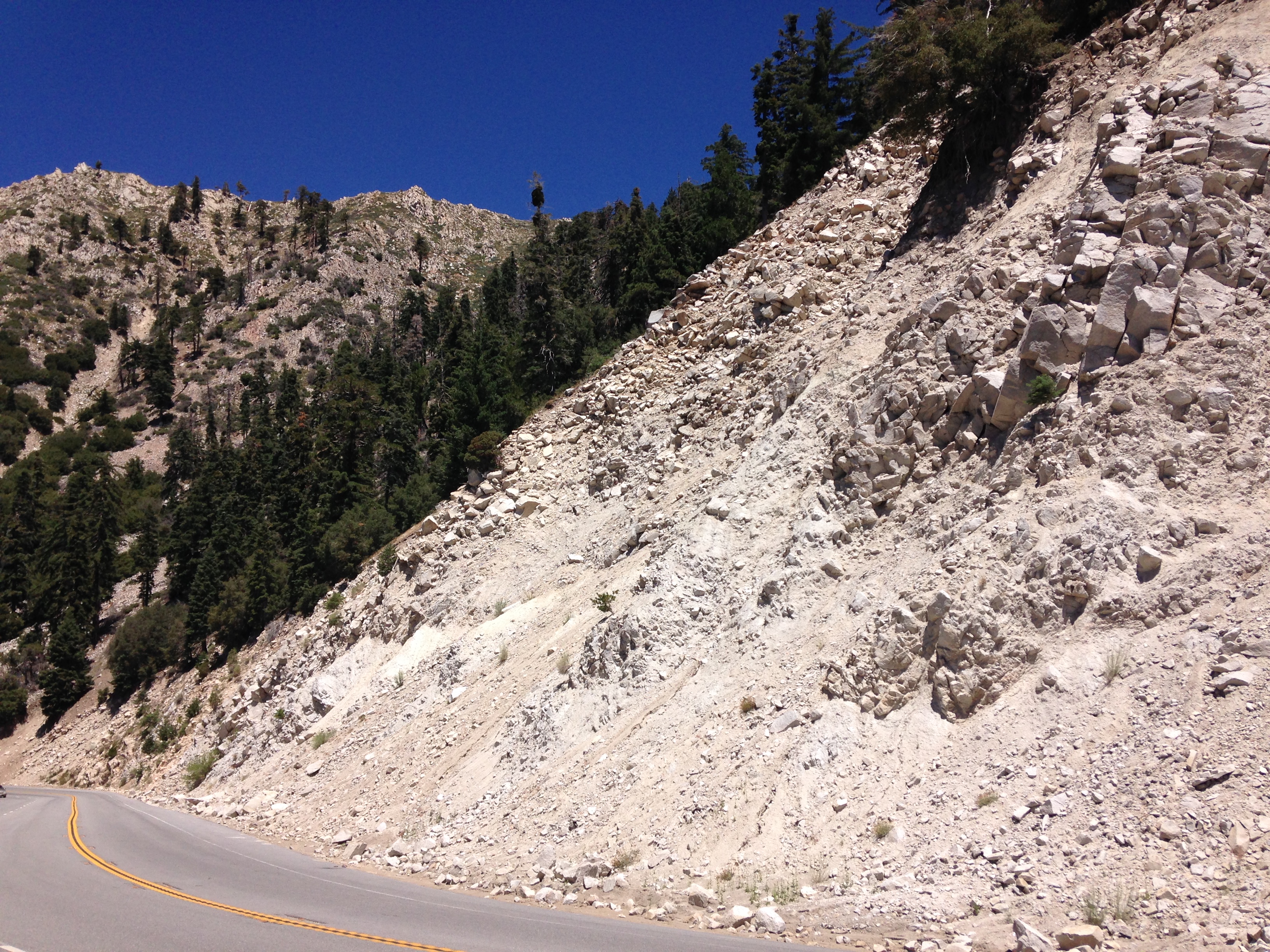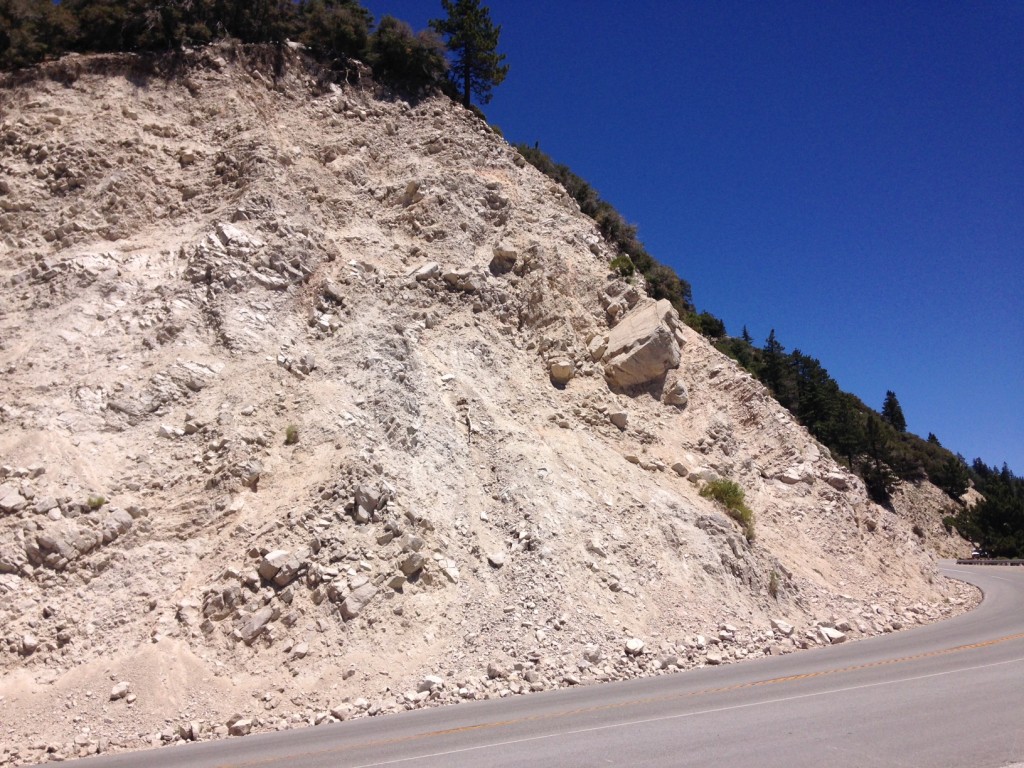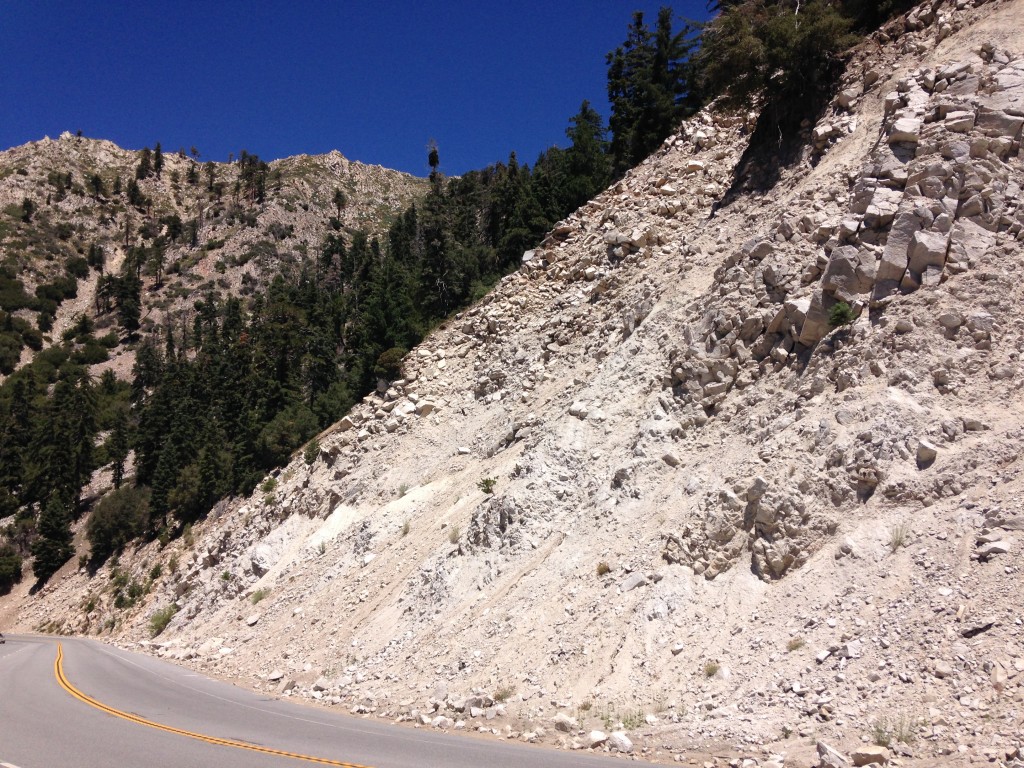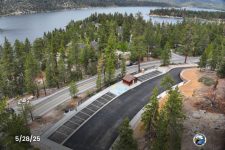

Big Bear City, August 23, 2014 – As beautiful as these mountains are, living so close to nature means being more vulnerable to its hazards. One of those hazards is rock slides. Local highways that wind between Big Bear and the San Bernardino Valley are tightly squeezed against towering hills in spots, and those hills are stacked with loose decomposed granite and teetering boulders that are easily unsettled by earthquakes or rainstorms.
Wildfires also contribute to instability by making the land more prone to erosion. In 1970, the Bear Fire set into motion slides that killed one person, and in 2004, after the Old Fire of 2003, a nine-year-old boy was fatally injured by a 18-inch rock that came through a vehicle window on Highway 330.
Falling rocks along State Routes 18, 330 and 38 have been known to severely damage cars, as well. One consistent trouble spot is the part of highway 18 between Bear Valley dam and Lakeview Point to the west, an area known as Arctic Circle. The five-mile segment has six avalanche zones.

A Maintenance Superintendent at Caltrans, the state agency responsible for highway planning, construction, and maintenance, says their crews make regular sweeps of the road when there is a known or suspected rock fall–especially during and shortly after storms, which further unsettle the ground. Besides those regular patrols, a Traffic Management Center operates 24/7 to quickly respond to urgent motorist advisories. (Caltrans emphasizes the importance of the public giving their vehicles space to clear the road. The grader and snow-blowers have a 29-foot turning radius. And drivers of larger equipment like dump trucks and big plows, can’t even see passenger vehicles, so it’s best to stay 200 feet behind them.)
So why is there a proactive response system in place there, but no preventative measures? In other parts of the San Bernardino Mountains, for example, there are barrier walls and steel netting on slopes adjacent to the road. One reason is expense of rock fall protection systems. Caltrans says the slope drape and attenuator installed on 330 cost approximately $300,000. On Highway 18 closer to Crestline, each small slope drape and debris flow barrier cost an estimated $100,000 at today’s cost. The large rock fall barrier in The Narrows would cost about $250,000 to install today.
According to Forest Service spokesman John Miller, the height of the slopes closer to Big Bear Lake are prohibitive. The installations were possible at lower elevations of 330 and 18 because the distances between the road and the top of the slopes are much smaller. Over the years, the Forest Service and Caltrans have discussed the possibility of buttressing the slopes through Arctic Circle, but they decided it’s not feasible to build a structure that large. Miller added, however, “If the state proposed something as a public safety issue, we’d support them and work hand in hand.”


